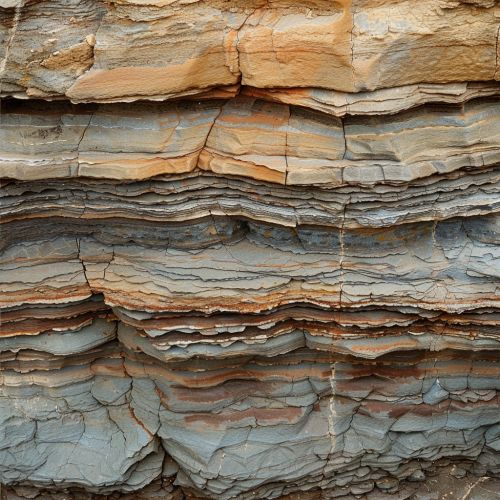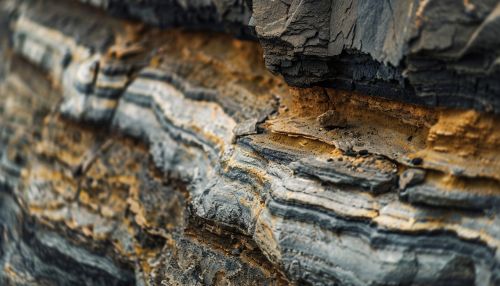Sediment
Introduction
Sediment is a naturally occurring material that is broken down by processes of weathering and erosion, and is subsequently transported by the action of wind, water, or ice. It is deposited through the process of sedimentation where it can form layers of sedimentary rock. Sediment can consist of rocks and minerals, as well as remains of plants and animals. It can be as small as a grain of sand or as large as a boulder. Sediment moves from one place to another through the process of erosion. The type of sediment that is deposited can change the physical characteristics and ecosystem of a body of water. Learn more about the study of sediment.


Formation of Sediment
Sediment is formed through the process of weathering. Weathering is the breaking down of rocks, soil, and minerals as well as wood and artificial materials through contact with the Earth's atmosphere, water, and biological organisms. Weathering occurs in situ, or "with no movement", and thus should not be confused with erosion, which involves the movement of rocks and minerals by agents such as water, ice, snow, wind, waves and gravity. There are two important types of weathering: physical weathering and chemical weathering. Learn more about weathering.
Types of Sediment
Sediment can be classified in several ways: by its source, by its composition, by its size, or by its shape. The primary types of sediment include clastic sediment, chemical sediment, and biogenic sediment. Each of these types of sediment have different characteristics and are formed in different ways.
Clastic Sediment
Clastic sediment is made up of fragments of rock that are transported and deposited by wind, water, ice, and gravity. Clastic sediment can range in size from tiny particles of clay to large boulders. The size of the particles can tell us a lot about the energy of the transport process. For example, large boulders can only be moved by high-energy processes such as strong river currents or glaciers, while tiny clay particles can be transported by the gentlest of breezes or slowest of currents. Learn more about clastic sediment.
Chemical Sediment
Chemical sediment is formed when minerals precipitate out of a solution, usually water. This can happen in locations where water evaporates and leaves the minerals behind. Examples of this type of sediment include salts and gypsum. Chemical sediment can also form through biological processes, such as the formation of limestone from the shells of tiny marine organisms. Learn more about chemical sediment.
Biogenic Sediment
Biogenic sediment is made up of the remains of living organisms. When plants and animals die, their bodies, shells, and bones are left behind and can become part of the sediment. This type of sediment is particularly important in the ocean, where it forms the basis for many sedimentary rocks. Learn more about biogenic sediment.
Sediment Transport
Sediment transport is the movement of solid particles, typically due to a combination of gravity and the movement of fluid in which the sediment is entrained. Sediment transport due to fluid motion occurs in rivers, oceans, lakes, and other bodies of water due to currents and tides. Transport can also occur on terrestrial surfaces under the influence of wind and gravity. The transport of sediment is important in shaping the landscape and in the transport of pollutants. Sediment transport also plays an important role in the distribution of natural resources, such as oil and natural gas. Learn more about sediment transport.
Sediment Deposition
Sediment deposition occurs when the forces transporting the sediment can no longer support the weight of the sediment particles. The particles fall out of the fluid and are deposited. This can occur in a variety of settings, from the bottom of a quiet lake to the bottom of the ocean. The characteristics of the deposit can tell us a lot about the conditions that existed at the time and place of deposition. For example, a layer of sand deposited by a river would indicate a fast-moving current, while a layer of mud would suggest quiet water. Learn more about sediment deposition.
Sedimentary Rocks
Sedimentary rocks are types of rock that are formed by the accumulation or deposition of small particles and subsequent cementation of mineral or organic particles on the floor of oceans or other bodies of water at the Earth's surface. Sedimentation is the collective name for processes that cause these particles to settle in place. The particles that form a sedimentary rock are called sediment, and may be composed of geological detritus (minerals) or biological detritus (organic matter). Learn more about sedimentary rocks.
